image
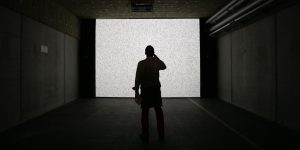
data.tron
Ryoji Ikeda (JP)
How many points are there in a line? What is the number of numbers? How can we verify that the random is random? data.tron is part of the datamatics project, a series of experiments that explore such questions both physically and mathematically. Visitors will experience the vast universe of data in the infinite between 0 and 1. data.tron is an audiovisual installation in which each single pixel of visual image is strictly calculated by mathematical principle, composed of a combination of pure mathematics and the vast sea of data present in the world. These images are projected onto a large screen, heightening and intensifying the visitor’s perception and total immersion in the work.
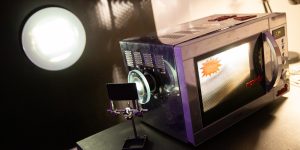
Insert & Play
Jeon Hess (KR)
*Insert & Play* is a microwave that functions as a moving image projector to provide a viable media player. While the project is a celebration of technology and industrial progress, it is also a reminder of nostalgic actions; insert and play—a ritual between man and machine on the verge of extinction.
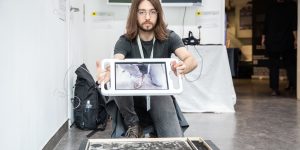
ARchaeologies
Pedro Soares (PT)
In Archaeologies, we’re faced with a sheet of paper in which an iconic picture from the past was engraved through folding. Observers may use the available materials to produce their own drawings while simultaneously revealing the hidden image. By observing the piece with an Augmented Reality app, we can see the strata that contain each individual citation made by the participants and how every new intervention is conditioned by the ones before it.
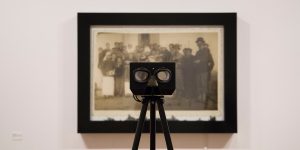
Wandering Gaze
Ana Teresa Vicente (PT)
The Wandering Gaze project explores the relationship between the observer’s gaze and an image through eye-tracking technology. The installation allows the viewers’ gaze to be materialized into a tangible path that will erode the surface of a photograph. The image is thus a performative space, as the viewers’ gaze is invited to wander about and explore it, contributing to the piece even while causing its deterioration. Developed with the technical assistance of MILL (Tiago Rorke, Maurício Martins and Pedro Ângelo).
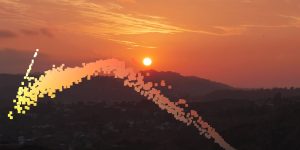
Modeling Color Spectra
Benedict Falkenstein (DE)
Each picture consists of many individual colors. Based on the RGB color space, I created a virtual reality application that shows a three-dimensional shape of the color spectrum of the image. This object can be moved and deformed by users, who can then see the changes they made to the picture. This direct link between the image and the three-dimensional color space gives the user a completely new perspective on colors and their location in the RGB color system.
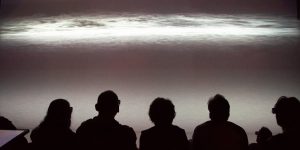
NOLANDX
Ulf Langheinrich (DE)
*NOLANDX* is an audiovisual composition. The aesthetic nucleus of the work are the image planes, algorithmically generated noise and lines as well as recordings of sea waves. This referential source material is transformed by slit-scan and other interventions on the time level. The result is a pulsating, stereoscopically black and white space: immersion in the interworld.
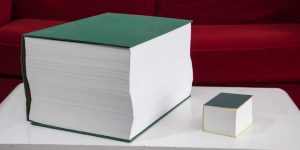
Digital Investigations #1 & #2
Valerio Vincenzo (IT)
The book, weighing about 30 kg, and composed of over 4,000 pages of binary code, is the negative of my photograph, namely its origin information: This sequence of 0 and 1 allows me to visualize the enormous amount of information produced each time I take a photograph. I cannot understand the information in this book, but for a computer the information in the book is the photo.
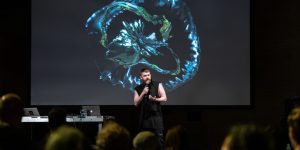
Nokia Bell Labs
Domhnaill Hernon (US)
An interactive experience fusing music and image. Users’ movements are transformed into a dynamically designed audio-visual experience through the Bell Labs Motion Engine.


